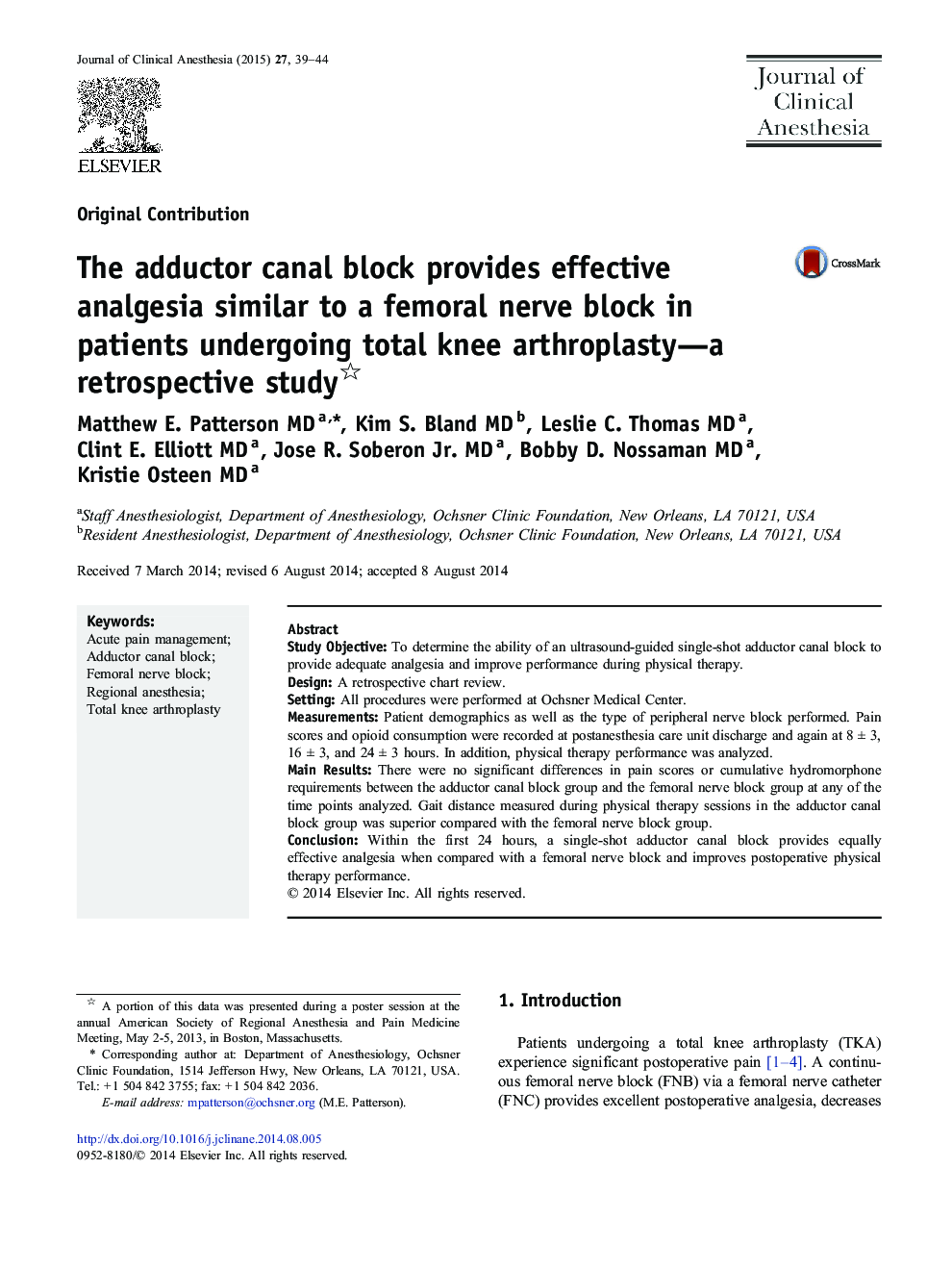| Article ID | Journal | Published Year | Pages | File Type |
|---|---|---|---|---|
| 2762249 | Journal of Clinical Anesthesia | 2015 | 6 Pages |
•Total knee arthroplasty is associated with significant postoperative pain.•An adductor canal block can provide analgesia similar to a femoral nerve block following a total knee arthroplasty.•The adductor canal block allows improved physical therapy performance compared with a femoral nerve block.
Study ObjectiveTo determine the ability of an ultrasound-guided single-shot adductor canal block to provide adequate analgesia and improve performance during physical therapy.DesignA retrospective chart review.SettingAll procedures were performed at Ochsner Medical Center.MeasurementsPatient demographics as well as the type of peripheral nerve block performed. Pain scores and opioid consumption were recorded at postanesthesia care unit discharge and again at 8 ± 3, 16 ± 3, and 24 ± 3 hours. In addition, physical therapy performance was analyzed.Main ResultsThere were no significant differences in pain scores or cumulative hydromorphone requirements between the adductor canal block group and the femoral nerve block group at any of the time points analyzed. Gait distance measured during physical therapy sessions in the adductor canal block group was superior compared with the femoral nerve block group.ConclusionWithin the first 24 hours, a single-shot adductor canal block provides equally effective analgesia when compared with a femoral nerve block and improves postoperative physical therapy performance.
